Best Rust Programming Books to Buy in January 2026
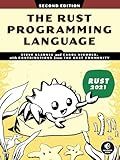
The Rust Programming Language, 2nd Edition


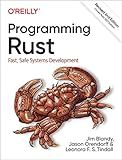
Programming Rust: Fast, Safe Systems Development



Learn Rust Through Projects: 10 Rust Projects That Teach You Everything



Rust in Action


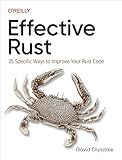
Effective Rust: 35 Specific Ways to Improve Your Rust Code


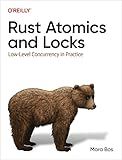
Rust Atomics and Locks: Low-Level Concurrency in Practice


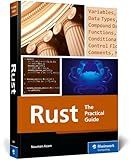
Rust Programming: A Practical Guide to Fast, Efficient, and Safe Code with Ownership, Concurrency, and Web Programming (Rheinwerk Computing)


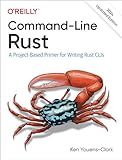
Command-Line Rust: A Project-Based Primer for Writing Rust CLIs


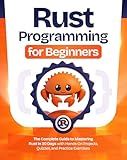
Rust Programming for Beginners: The Complete Guide to Mastering Rust in 30 Days with Hands-On Projects, Quizzes, and Practice Exercises



Rust Programming: A Comprehensive Learning Path from the Basics to Cutting-Edge Techniques


To declare an interface in Rust, you can define a trait. A trait is similar to an interface in other programming languages and helps define behavior that types should adhere to.
You can declare a trait using the trait keyword followed by the trait's name. The trait can have associated functions and methods that define the required behavior.
Here's an example of declaring an interface using a trait in Rust:
trait Printable { fn print(&self); }
struct Person { name: String, }
impl Printable for Person { fn print(&self) { println!("Name: {}", self.name); } }
In the above example, the Printable trait is declared using the trait keyword, and it has one method named print. The Person struct implements the Printable trait by providing an implementation for the print method.
Using this trait, you can call the print method on any variable whose type implements the Printable trait. This ensures that any type that implements the Printable trait will have the required behavior.
fn main() { let person = Person { name: String::from("John Doe"), };
person.print();
}
In the main function, an instance of the Person struct is created, and the print method is called on it, as it implements the Printable trait.
By declaring and implementing traits, you can define interfaces in Rust and ensure that types adhere to the specified behavior, providing a flexible and reusable code structure.
What is the role of an interface in Rust programming?
In Rust programming, an interface is known as a trait. The role of a trait/interface is to define a set of behaviors that a type can implement. It allows multiple types to share a common interface and provides a way to define and enforce contract-like behavior.
Some key roles of interfaces in Rust programming are:
- Defining behavior: Traits allow developers to define sets of methods that a type should implement. It serves as a blueprint for types that want to provide certain functionalities.
- Enabling polymorphism: Traits enable polymorphism, which allows different types to be used interchangeably if they implement the same trait. This promotes code reuse and flexibility.
- Defining contracts: Traits specify the expected behavior and contracts that a type must adhere to if it implements the trait. This helps to ensure correctness and provides a level of guarantee when interacting with different types.
- Enforcing type safety: Interfaces in Rust help ensure type safety by ensuring that the types implementing a trait actually provide the required functionality. This helps catch potential errors during compile-time rather than during runtime.
Overall, interfaces (traits) in Rust play a vital role in defining behavior, enabling polymorphism, enforcing contracts, and ensuring type safety. They contribute to Rust's design principles of performance, memory safety, and expressiveness.
How to declare an interface in Rust?
In Rust, interfaces are implemented using traits. Here's how you can declare an interface (trait) in Rust:
// Declare a trait (interface) trait MyInterface { // Define method signatures fn my_method(&self); }
// Implement the trait for a struct or type struct MyStruct;
impl MyInterface for MyStruct { fn my_method(&self) { // Implementation of the method println!("Hello from my_method"); } }
// Use the interface (trait) through a generic function fn my_function<T: MyInterface>(item: T) { item.my_method(); }
fn main() { let my_struct = MyStruct; my_function(my_struct); }
In this example, the MyInterface trait is declared using trait keyword. It has a single method signature my_method. Then, the MyStruct struct implements this trait (MyInterface) by providing the implementation for the my_method method.
The my_function function demonstrates the usage of the trait. It takes a generic type parameter T that must implement the MyInterface trait. Inside the function, the my_method method is called on the item argument.
Finally, in the main function, an instance of MyStruct is created and passed to my_function to demonstrate the use of the interface/trait.
What is the difference between an abstract class and an interface in Rust?
In Rust, the difference between an abstract class and an interface is mainly a conceptual one.
An abstract class in Rust is a trait with concrete methods. It can provide default implementations for some or all of its methods, and can also have associated data fields. However, unlike a concrete struct, an abstract class cannot be instantiated directly. Concrete structs can implement multiple abstract classes.
On the other hand, an interface in Rust is represented by a trait with method signatures but no implementations. It defines a contract that a type must fulfill by providing implementations for all the methods declared in the interface. A type can implement multiple interfaces.
In summary, the key difference between an abstract class and an interface in Rust is that an abstract class can provide default method implementations, while an interface only defines method signatures. Additionally, a type can only implement one abstract class, but can implement multiple interfaces.
What are some common design patterns involving interfaces in Rust?
In Rust, interfaces are implemented using Traits, which provide a way to define shared behavior across different types. Here are some common design patterns involving interfaces (Traits) in Rust:
- Adapter pattern: The adapter pattern allows a type to work with another type that it does not directly implement. By defining a Trait that the target type must implement, you can create an adapter type implementing this Trait for the desired target type.
- Decorator pattern: This pattern allows you to add additional functionality to an existing type without directly modifying it. You can define a Trait representing the base functionality, and then create wrapper types that implement this Trait and extend the behavior.
- Observer pattern: The observer pattern allows multiple objects to be notified when a specific event occurs. By defining a Trait for observers and providing methods for subscribing and notifying them, you can implement this pattern. Types interested in receiving notifications implement the observer Trait and register themselves with the subject.
- Strategy pattern: This pattern allows you to define a family of algorithms and make them interchangeable. By defining a Trait that describes the algorithm interface and implementing different strategies for the Trait, you can switch between algorithms dynamically at runtime.
- Factory pattern: The factory pattern allows you to encapsulate object creation logic in a separate method or type. By defining a Trait for the objects you want to create, you can implement different factory types that return objects implementing the Trait.
Note that these patterns are not limited to Rust and can be applied in various programming languages. However, the specific implementation syntax and idioms may differ between languages.
